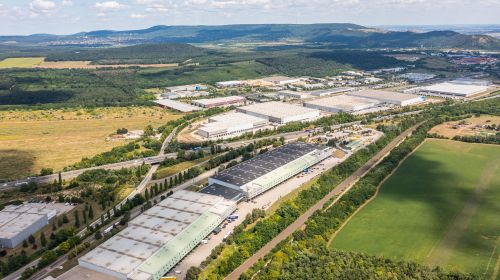Trumping all expectations
Stock market reportThe outcome of the US elections had been expected to have a crucial bearing on the mood of the global stock exchanges. Hillary Clinton’s victory was supposed to foster reassurance and prevent a repeat of the Brexit shock that afflicted the stock exchanges in June. A Trump win, however, was expected to spark panic on the markets. The result was indeed initially greeted with falling share prices (which even plummeted in Asia), an increase in gold prices and a sell-off on emerging markets – but the bourses had already bounced back by as early as the afternoon of the same day. Election week turned out to be one of growth for the majority of the main markets. The improvement in the indexes across the Atlantic was accounted for by a strengthening of the dollar vs. the euro that had not been seen for more than ten years. How could this be explained if Trump’s election was expected to devastate the global financial markets to at least the same extent as the Brexit vote had done? The most frequently mooted theory is that once installed as president, Trump’s more extreme promises will be watered down – or at least those that could damage the economy. Added to that, investors are seeing the simultaneous victory of Trump and the Republican Party (which now has majorities in both the Senate and the House of the Representatives) as a chance to push through changes beneficial to the American economy (e.g. deregulation, tax decreases). The concerns about the geopolitical consequences have – for the moment – taken a back seat. Trump is not yet the president, however, and there is a one popular strand of opinion among experts that the shift towards US economic isolationism (which will not go without impacting the Chinese economy) could suppress global economic development, while its soft policy towards Russia could result in further instability in parts of the world, including Eastern Europe. According to analysts, these worrying scenarios will not start to worry investors before the end of 2016. In the meantime, the markets can expect a pre-Christmas rally and a decent ending to the year – especially considering the latest macro data (a 4.4 pct quarterly GDP rise in the USA and an almost 8 pct increase in China), as well as all the Q3 company results, which have provided a strong fillip to buying shares. The Warsaw Stock Exchange has also seemed in rude health over the last few weeks, with the WIG20 still fluctuating between 1,700 and 1,800 points. The main stock exchange index hardly moved at all in the last month and neither did WIG-Developers, which defended its position at 1,760 points. WIG-Construction was the weakest index, losing almost 7 pct. The construction industry has been affected by a slowdown in investment (both public and private) supported by European funds. The surprisingly disappointing GDP data in Q3 confirmed that the economy is weakening – growing at a mere 2.5 pct, compared to 4.3 pct in Q4 last year. However, this does not mean that construction companies are set for price falls and poorer results than the WIG broad market index (the WIG and WIG-Bud indexes have been rather similar over the last year, whereas WIG-Developers is clearly now top of the class). Analysts have been quick to point out that the recent results and prospects are still good. Meanwhile, possible stock price falls (e.g. Budimex) are an opportunity to purchase shares. Smaller players than Budimex, e.g. Erbud and Unibep, currently have very large order portfolios and the railway and road projects they have been planning are finally getting started. Mostostal Warszawa could also boast good Q3 results – with both increased revenue (PLN 1.07 bln, compared to PLN 936 mln a year earlier) and a higher net profit (PLN 26.4 mln, up from PLN 19.2 mln). Polimex-Mostostal also saw higher revenue, but suffered a loss instead of a profit. The company has also made losses on its flagship project, the Kozienice power plant, and its proposal to hand over the project five months behind schedule, has yet to receive a response. The situation for developers is much better than for construction companies. A continuosly growing economy, the low interest rates and the low unemployment are all driving the demand for new homes – and developers are taking full advantage of this: 76,000 apartments were completed over the last twelve months and another 90,000 are under construction. Therefore it is not surprising that WIG-Developers has not only stolen a march on the construction index this year, but has reached its highest levels of the last five years. For example, over the first three quarters of the year Dom Developer’s revenue amounted to PLN 586 mln, whereas a year ago it was PLN 424 mln while its profit grew from PLN 13 mln to PLN 40 mln. In the case of J.W. Construction, its revenue for the three quarters increased by 154 pct to PLN 437 mln with a net profit of PLN 35 mln. A year ago its profits amounted to just... PLN 1 mln.
BUDAPEST THE BEST
If you were thinking that the relatively rosy autumn period for the WIG20 meant that the main WSE index was the strongest of the regions’ three main indices, you would have been mistaken. The BUX50 experienced growth of almost 4 pct, exceeding its historic level of 30,000 points. It was the Prague index that turned out to be the weakest this time round, losing 3 pct with its traditionally marginal turnover and low investor activity.





















































